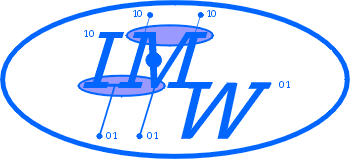INSTITUTE OF MATHEMATICAL ECONOMICS


Wulf Albers
Abstract
The theory of prominence deals with perception of numbers and creation of numerical responses. An important step was the observation, that the step structure induced by the full step numbers {a*10^i: a Î {1,2,5}, i integer} can be used to define a perception function. The obtained step structure permits to substructure large ranges of numerical responses by 'iterated halving or doubling' as going from 100 to 200, 500, 1000, 2000, 5000, etc. in one direction and to smaller values 50, 20, 10, 5, 2, 1, etc. in the other; and - using a finest perceived full step - also permits to measure the distance from zero. If, for instance, the finest perceived full step is 10, the step sequence ..., 100, 50, 20, 10, 0, -10, -20, -50, ... is obtained which permits to evaluate distances of positive and negative numbers. The obtained function has high similarity to the evaluation function for money of the theory of KAHNEMAN-TVERSKY (1992), and permits to consider this theory from new theoretical aspects. The same structure can be applied to the perception of probabilities, where the perception of probabilities follows steps as 0, 5, 10, 20, 50, the perception of counterprobabilities follows the steps as 100, 95, 90, 80, 50. Stitching the scales in 50, one obtains a function which is similar to KAHNEMAN-TVERSKY's p-function for the perception of probabilities. - An important feature of this approach is, that finest perceived full step of money, and finest perceived full step of probability are not universal constants, but depend on the specific situation. This phenomenon could be used to detect new, and explain known paradoxa of the perception of prospects (see Part IV). In order to develop the theory of prominence to a general tool to predict the evaluation of prospects, general rules of task-dependend selection of the finest perceived full step of money, and the finest perceived full step of probability and counterprobability are necessary. It took us several years of investigation to clear up the problem and finally create a set of data which was short enough to be answered in reasonable time, and on the other hand large enough to cover the central issues of the problem. The result of this study is presented in Part VI. It describes a rule system that describes the selection behavior for finest perceived full step of the money and probability scales. Another subproblem was that had to be solved was the evaluation of losses, which is modelled such that the steps within the range of negative payoffs are simply counted double (factor 2 as a constant of nature). - The result clearly supports the theory of prominence as a general model, and in particular shows that the theory can be applied to the evaluation of prospects. It gives a new access to understand the evaluation of prospects, and permits to reflect the approch of KAHNEMAN-TVERSKY from a new point of view. But it also raises additional questions, for instance, how prospects with more than two alternatives are evaluated.

| walbers@wiwi.uni-bielefeld.de | ||||
| List of IMW Working Papers | Members of the IMW | |||
|
Last Update: Monday, 23-Nov-98 13:39:59 MET©
Michael Borgelt Sending to: 134.76.163.122, Index:1 |